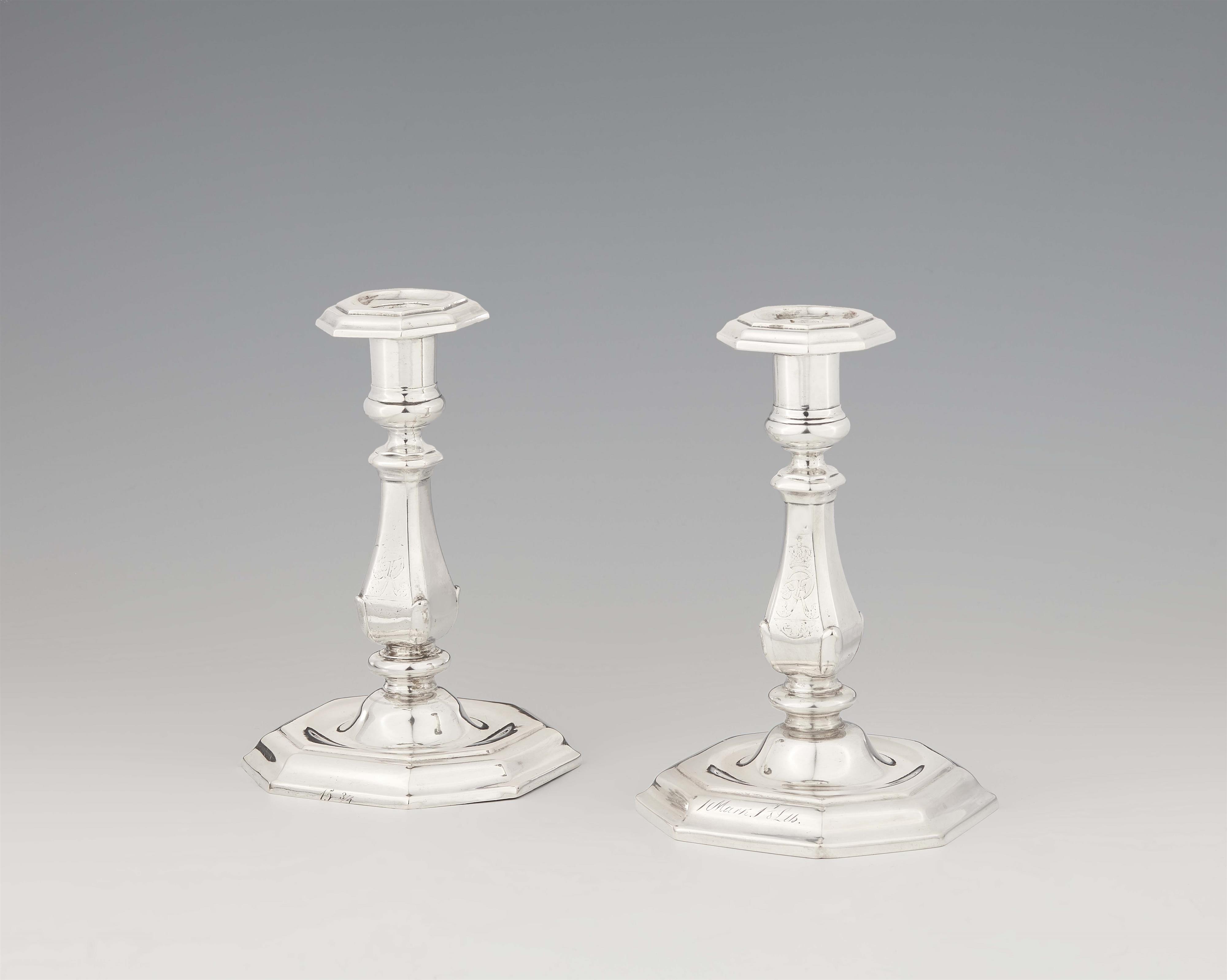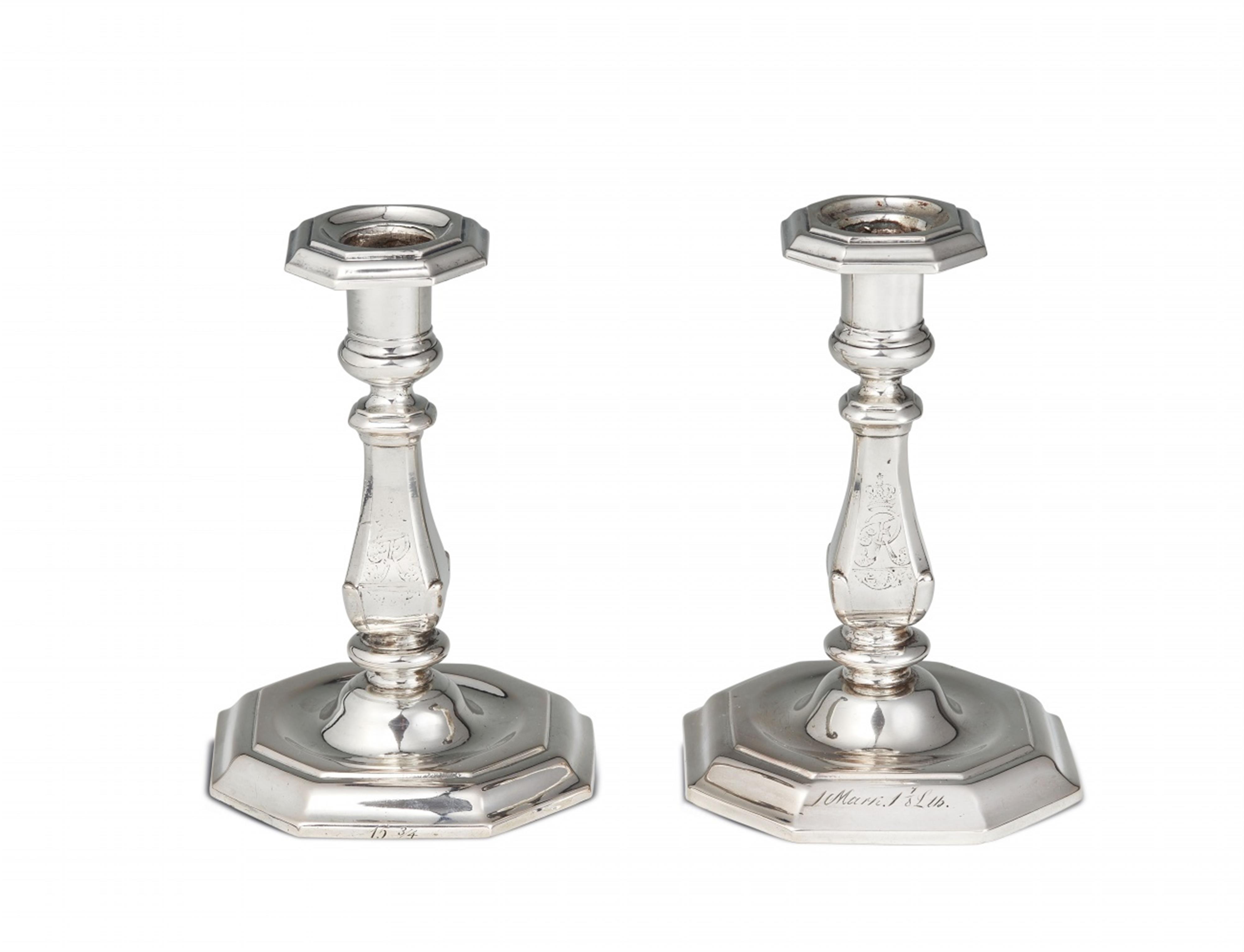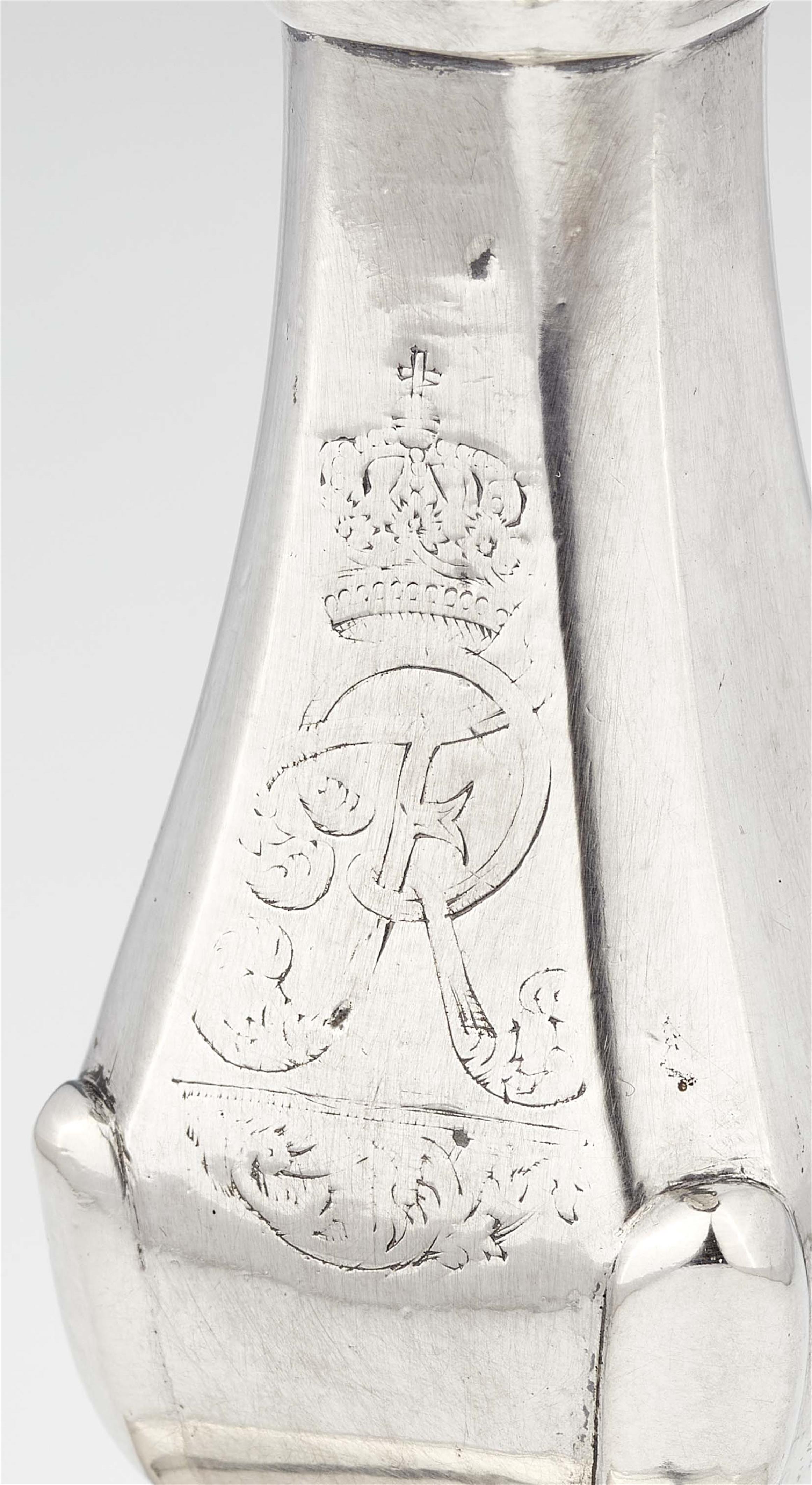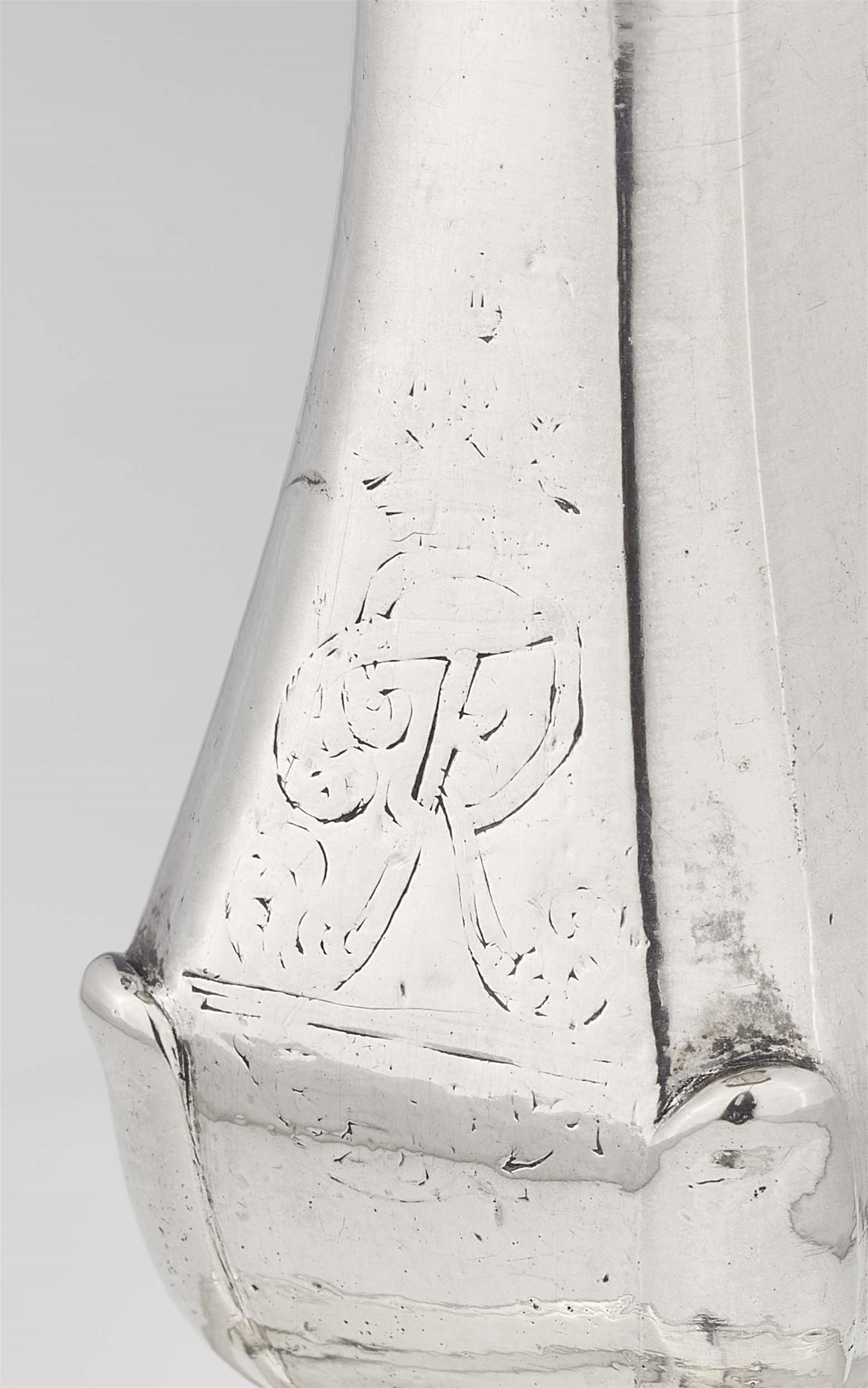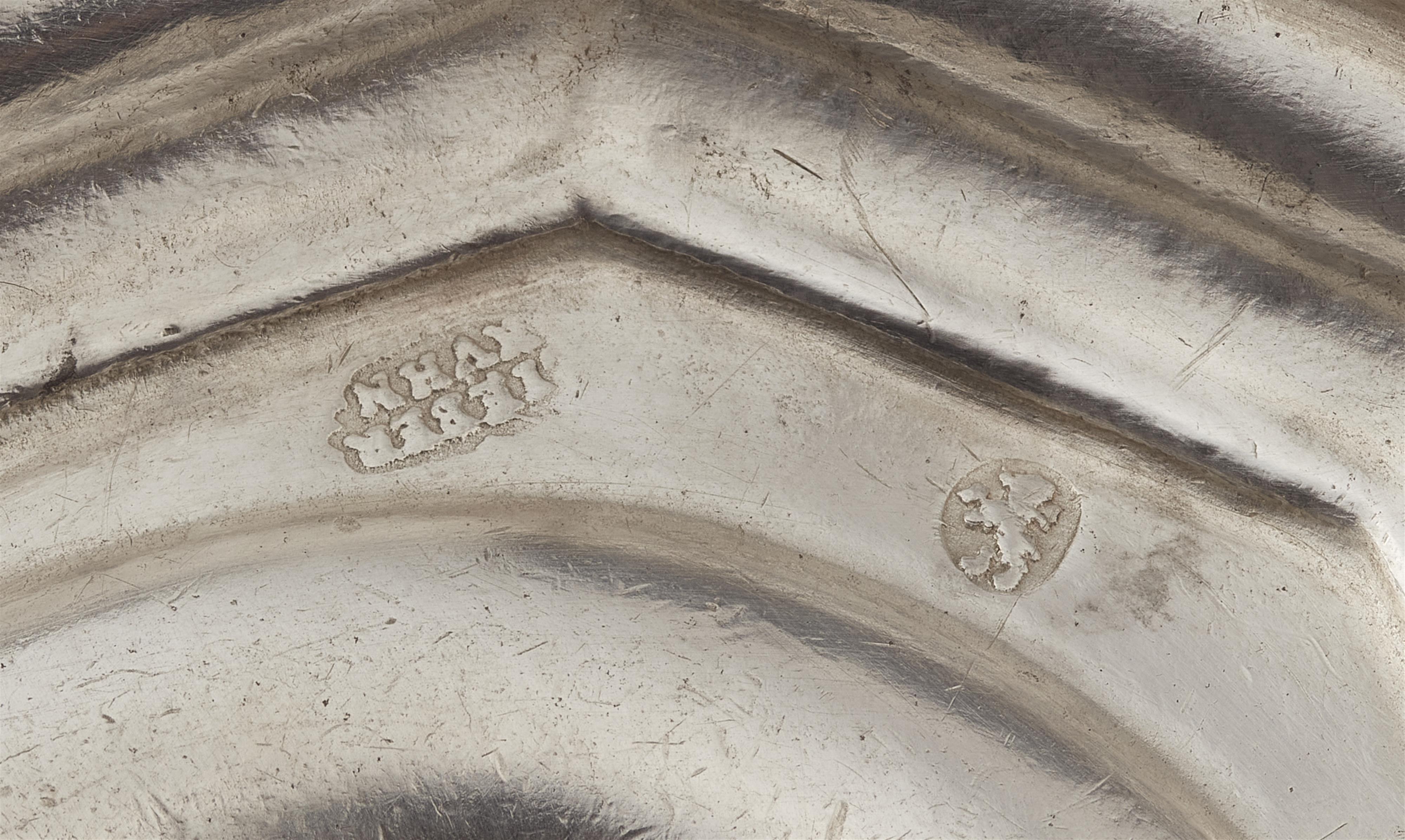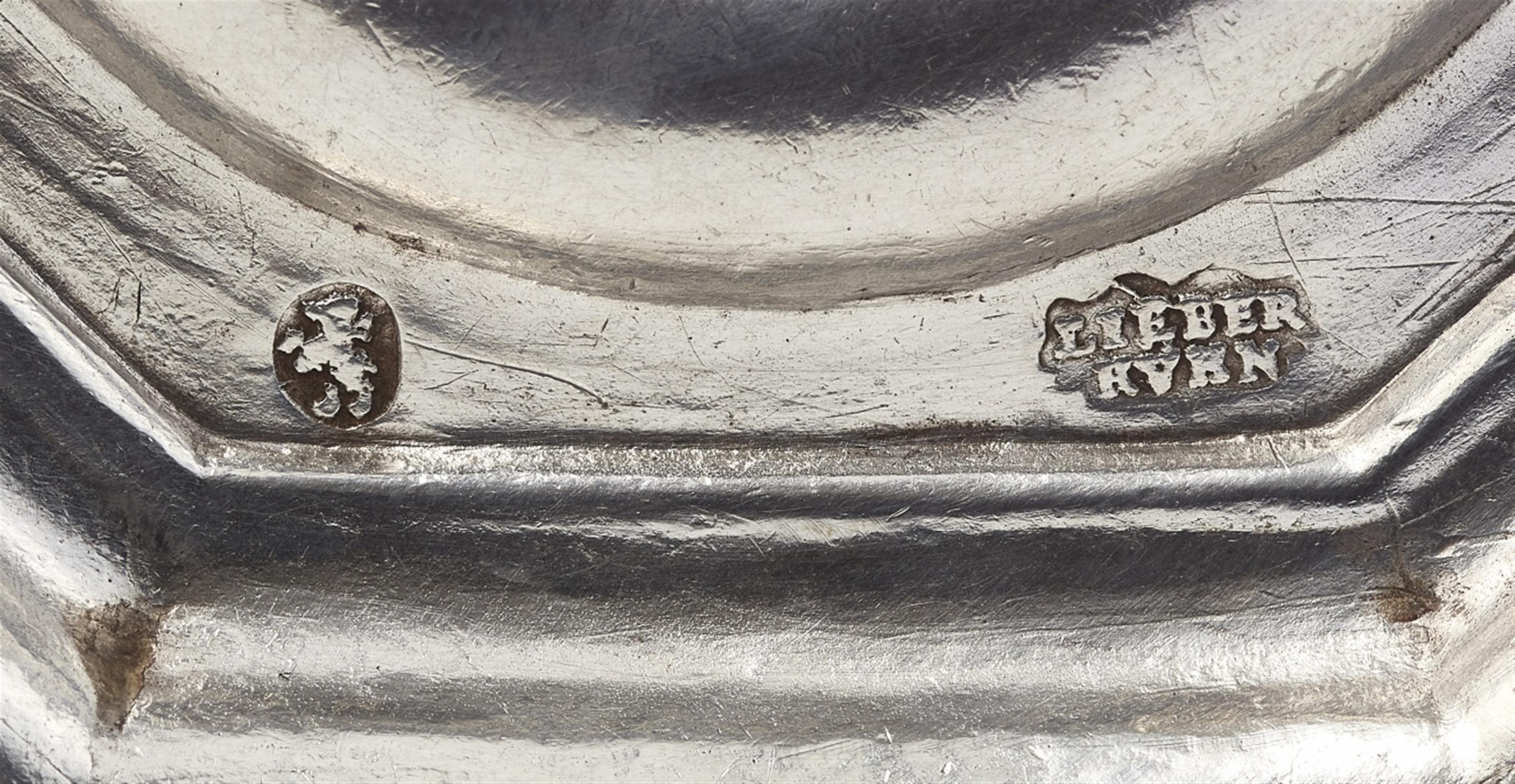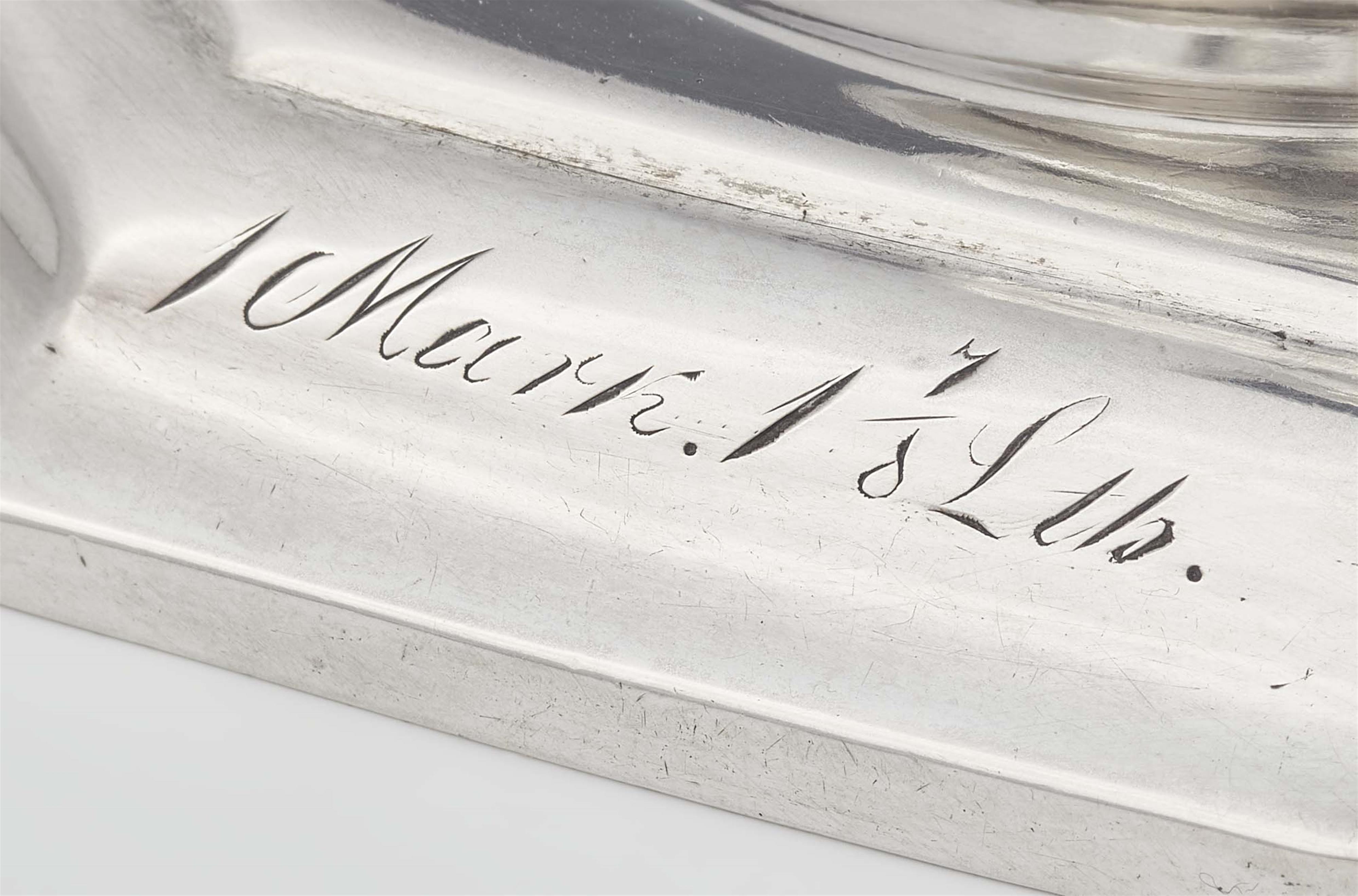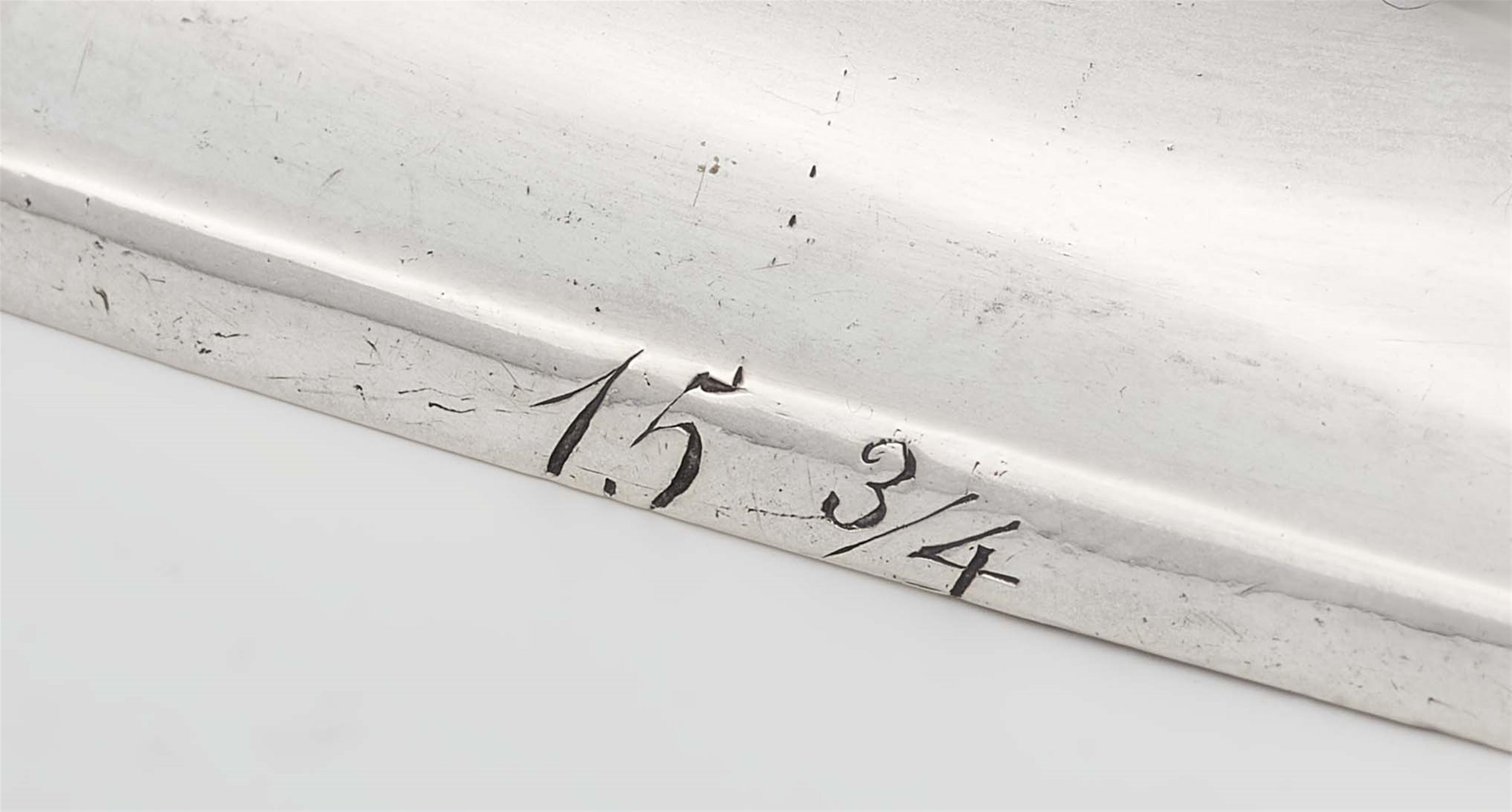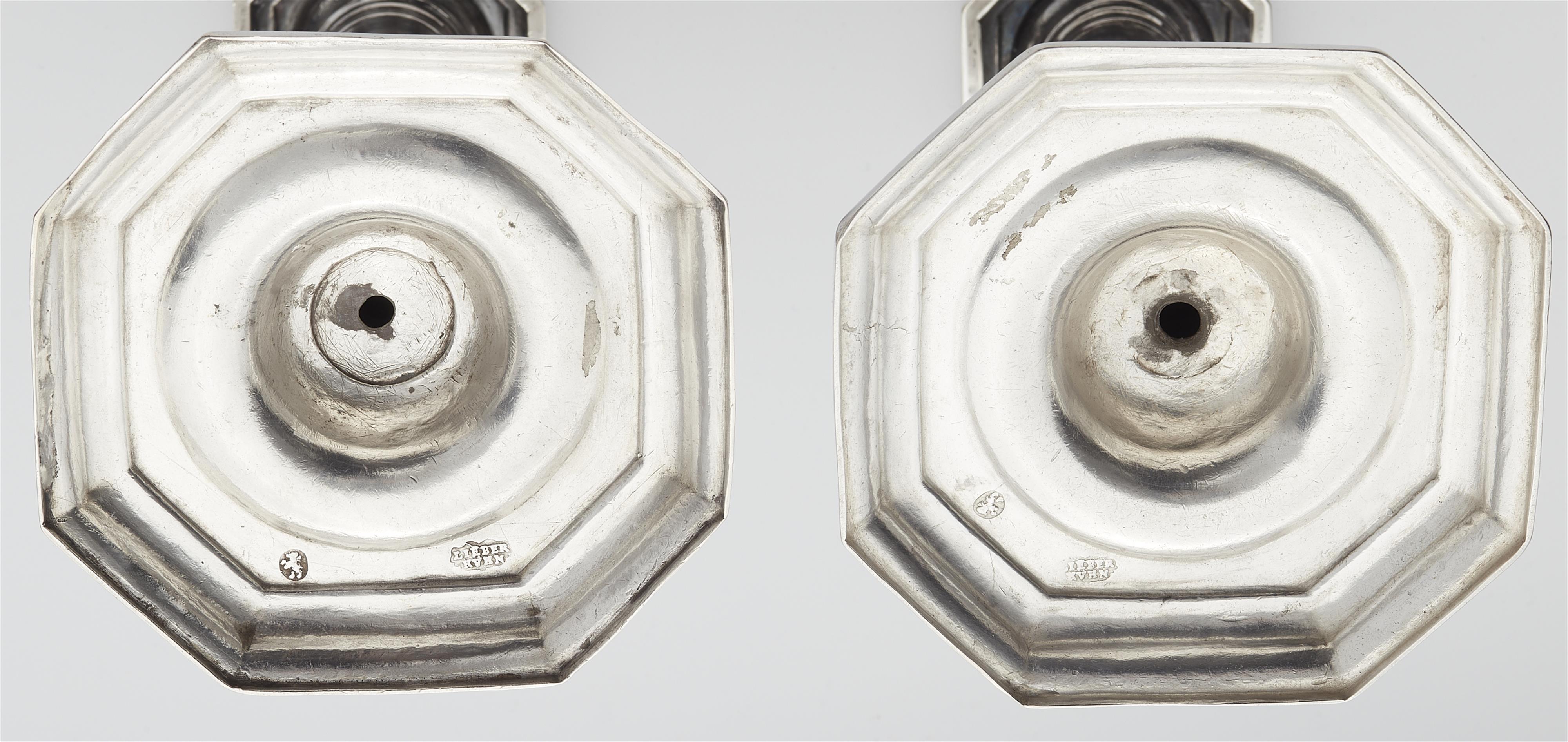A pair of Berlin silver candelsticks from the dinner service of Frederick the Great
Slightly domed octagonal bases with concave centres. Baluster-form shafts with octagonal drip-pans and cylindrical nozzles, the shafts monogrammed "FR" beneath the Prussian crown to the lower section. Engraved with weights by the royal silver chamber "15 3/4" and "1 Mark. 1 7/8 Lth.". H 14.5 cm, weight 508 g.
Marks of Christian Lieberkühn the Younger, 1746/47.
This pair of candlesticks were part of the "Neues Silber Service" commissioned from Lieberkühn by Frederick II after the end of the Second Silesian War. The service, for which multiple subsequent orders were made, originally comprised 50 to 60 place settings, each of which included a small candlestick.
The year 1745 began under difficult circumstances for Prussia: Frederick II was in the midst of the Second Silesian War against Maria Theresa. Despite the seemingly overpowering enemies, the Prussians were able to defeat the enemy armies in the battles of Hohenfriedberg, Soor and Kesselsdorf during the course of the year. As a result, the Peace of Dresden was signed on 25th December 1745, confirming Silesia as part of Prussia. On his return home to Berlin, Frederick was dubbed "the Great" for the first time. So enthusiastic were the people of Berlin that "Vivat Fridericus Magnus" was written on many houses.
The peace agreement also had tremendous economic repercussions: The Saxons were obliged to pay compensation of one million thalers to Prussia. In addition, the mineral resources of Silesia - not least its rich silver deposits - remained as an important source of Prussian prosperity.
The two candlesticks that Christian Lieberkühn the Younger created for Frederick II in 1746/47 as part of the "new silver service" therefore have a direct connection to the military "fortune" of the Second Silesian War that he invoked. Lieberkühn was one of the most outstanding goldsmiths of his time in the middle of the 18th century. As a court goldsmith, he succeeded in implementing the king's taste, which was constantly evolving during the time of peace. The candelabra visibly still follow the formal language of the Baroque, while Sanssouci Palace, inaugurated in 1747, already combines many elements of the Rococo. Frederick had personally influenced the construction plans of Sanssouci as well as designs for porcelain and silverware for the palace. It is therefore not unlikely that the candlesticks in his silver service not only bear his monogram "FR", but were also designed and used by him.
Silver objects from the Frederician era are extremely rare to find on the art market - not least because a large part of the work was melted down by Berlin goldsmiths in 1808 at the instigation of Frederick William III in order to be able to pay the first million of the war indemnity demanded by Napoleon.
Provenance
Lempertz Berlin sale 1105, 21 April 2018, lot 29.
Rhenish private Collection.
Literature
Cf. a candlestick from this series illus. in cat.: Kaiserliches Gold und Silber, Schätze der Hohenzollern aus dem Schloß Huis Doorn, Berlin 1985, S.73f., Cat. no. 56. Cf. also items from this service illus. in cat.: Kronschatz und Silberkammer der Hohenzollern, Berlin/Munich 2010, cat. no. 30.

